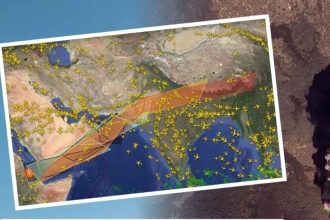In its flagship publication, “the Asian Development Outlook (ADO) 2015”, the Manila-based lending agency painted a mixed picture of Pakistan’s economy but was not sure whether it would be able to deliver on key economic indicators.
In fiscal year 2015-16, the government is striving to take the budget deficit down to 4.3% of gross domestic product (GDP) or Rs1.319 trillion.
“Notable risks to the budget estimates include failure to achieve a significantly higher provincial fiscal surplus and the Federal Board of Revenue (FBR) collecting less tax than projected,” said the report.
The bank’s concerns were not misplaced as the FBR faced a huge shortfall in tax revenues in the first two months (July and August), which has made it almost impossible to touch the annual target of Rs3.104 trillion.
The lower-than-expected tax revenues have a direct bearing on provincial cash surpluses. Under the National Finance Commission award, provinces get 57.5% of total federal tax collections.
According to the federal government’s estimates, the provinces will generate Rs297 billion or about 1% of GDP in cash surplus.
However, the ADB said the provincial fiscal surplus had so far remained below budget estimates, contributing to higher deficits.
In the previous fiscal year too, the country had missed the goals set for the budget deficit and economic growth.
Discussing economic progress, the ADB said the country’s growth was expected to edge up to 4.5%, which was still one percentage point below the official target of 5.5%.
Prospects for large-scale manufacturing hinged on progress on improving power supply, it said.
However, plans to build an economic corridor linking Kashgar in China to the Gwadar Port in Pakistan could significantly boost private investment and economic growth in coming years.
“More rapid and durable growth requires structural reform to improve tax revenues, energy supply and the business climate,” said the ADB in an advice the government was not taking seriously.
The bank believed that consumption would remain the key growth driver, supported by higher salaries and robust remittances.
It also added the status of women participation and its impact on economies in the latest report.
Also according to the bank, Pakistan is among those countries that do not have a law to prevent gender discrimination in hiring.
There is also no law for the same job for non-pregnant and non-nursing women as men. Pakistan also lacks a law for equal remuneration for men and women of equal value.
“In Pakistan, economic growth continues to be impeded by gender gaps in workforce participation, entrepreneurial activity and education.”
The restriction imposed by men appears to be a critical constraint that keeps female workforce participation low.
While 40% of unemployed women report having free time, a quarter of unemployed women say they would like to work if they could find a suitable job.
The ADB said Pakistan’s current account deficit was expected to widen marginally as slightly higher oil prices and stronger growth in advanced countries translated into an expansion in trade.
Nevertheless, exports are expected to increase only slightly after two years of stagnation, as manufacturing continues to suffer from energy shortages and low cotton prices see only a modest increase.





